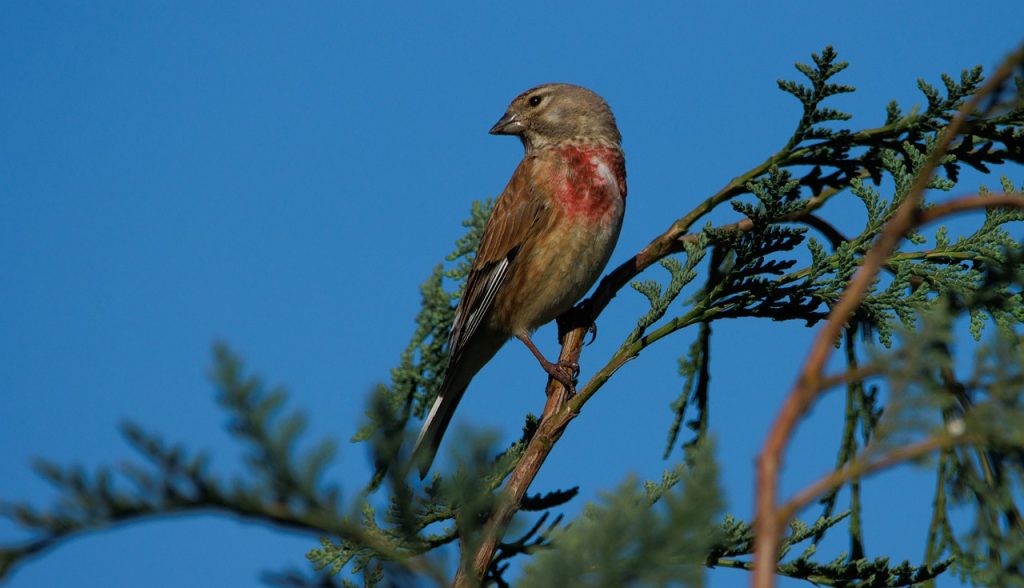
The Goldfinch, scientifically known as Carduelis carduelis, is a beloved small bird renowned for its vibrant plumage and social nature. In its natural habitat, the Goldfinch prefers open fields, partially wooded areas, and environments rich in tree seeds such as alder, birch, thistle, and dandelion.
Appearance and Dimensions:
- Size: Goldfinches typically measure between 12-13 cm in length with a wingspan of 21-25 cm and weigh 14-19 grams.
- Plumage: Both male and female Goldfinches exhibit similar plumage patterns. They have brown chests and backs, with darker (black) wings, tail, and neck. Their cheeks, vent, and abdomen are white. The wings feature distinctive yellow markings.
- Sexual Dimorphism: Male Goldfinches sport a larger red mask extending beyond the eye, while females have a smaller red mask that reaches only to the center of the eye.
Young Goldfinches:
- Young Goldfinches, known as grey-pates, lack the distinct red mask and black crown seen in adults. These markings develop after their first moult.
Habitat and Behavior:
- Social Nature: Goldfinches are highly social birds, often found in large flocks and small colonies during breeding seasons.
- Migration: They travel extensively in search of food, forming migratory flocks especially during winter.
Feeding Habits:
- Natural Diet: In the wild, Goldfinches primarily feed on various seeds including thistles, chickweed, groundsel, coltsfoot, teasel, dandelion, birch, alder, and pine. They also consume fruits and insects, particularly during breeding seasons.
- Captivity: In captivity, their diet should include a variety of seeds, fresh fruits (like apples and pears), and vegetables (such as spinach, cucumber, and dandelion). Supplements like vitamins E and A are crucial during specific stages of their lifecycle.
Breeding Habits:
- Nesting: Goldfinches construct their nests high in trees using moss, roots, dried herbs, lichens, wool, fur, and feathers.
- Eggs: Females lay 4-6 blue eggs with speckles, which hatch after approximately 11-14 days.
- Parenting: Both parents care for the chicks, feeding them a combination of insects and seeds until they fledge, which typically occurs around 13-18 days after hatching.
- Multiple Clutches: Goldfinches may produce 2-3 clutches per breeding season.
Care in Captivity:
- Environment: Captive Goldfinches thrive in large aviaries or spacious cages with adequate room to fly and socialize. They enjoy bathing, so providing a shallow water bowl is recommended.
- Health: Proper hygiene, ample space, and a balanced diet are crucial to their health in captivity. They are generally hardy but can suffer from poor conditions and diet-related issues if not cared for properly.
Conclusion
The Goldfinch, with its striking appearance and sociable demeanor, is a joy to observe both in the wild and captivity. By understanding their natural behaviors, habitat preferences, and dietary needs, enthusiasts can provide a nurturing environment that promotes their well-being and longevity.
